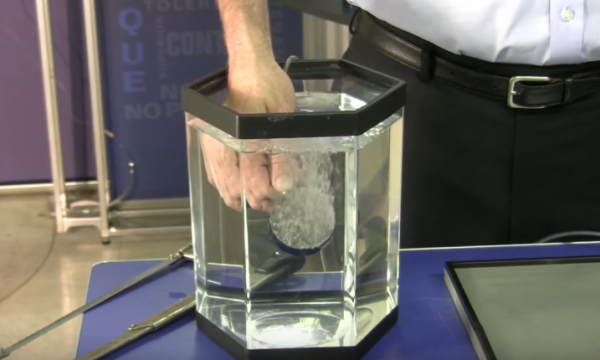Glass thickness variation errors are a limiting factor in the lithography required for higher definition displays. Even high-quality FPD glass is subject to these variations, reducing processing/inspection accuracy. In fact, there is an inherent thickness variation of 5 to 7 microns; when sucked down to a flat vacuum chuck, all 5 to 7 microns of this variation will appear as surface-flatness error.
But New Way was recently issued United States Patent No. 7,908,885-B2for a ‘Non-Contact Porous Air Bearing and Glass Flattening Device.’ This invention is a method for supporting thin work pieces, particularly glass, for more precise inspection, coating, patterning, and other processes. This new technology stands conventional thinking on its head. It uses a combination of air pressure (distributed by New Way Porous Media Technology through millions of sub-micron sized holes) and vacuum from above to control and flatten the glass substrate, enabling a much higher degree of processing accuracy, all without contact.
By floating the glass through a precision zone, the area that requires precision is dramatically reduced. And by positioning the vacuum preloaded air bearing array on the same side as the precision process being applied to the glass, the natural thickness errors in the glass or substrate may be removed or minimized.
This new approach reduces the requirement for depth-of-field capability in the tool, and enables higher-resolution lithography, while also greatly minimizing the structural loop between the optics and the glass.
Today’s Generation 10 glass is 2850mm x 3050mm, or 8.7 square meters. And a structural loop that must include components above and below the glass is problematic. Many contemporary FPD processing lines still feature a multi-ton granite base, a giant gantry with two large granite columns, a huge stage mechanism, and the processing equipment or inspection cameras themselves. This structural loop can be 10 meters or longer.
In this new embodiment, with the glass moving just 10 microns below the processing or inspection equipment, the structural loop can be just a small fraction of a meter. This avoids errors from thermal and vibration sources in the machine.



